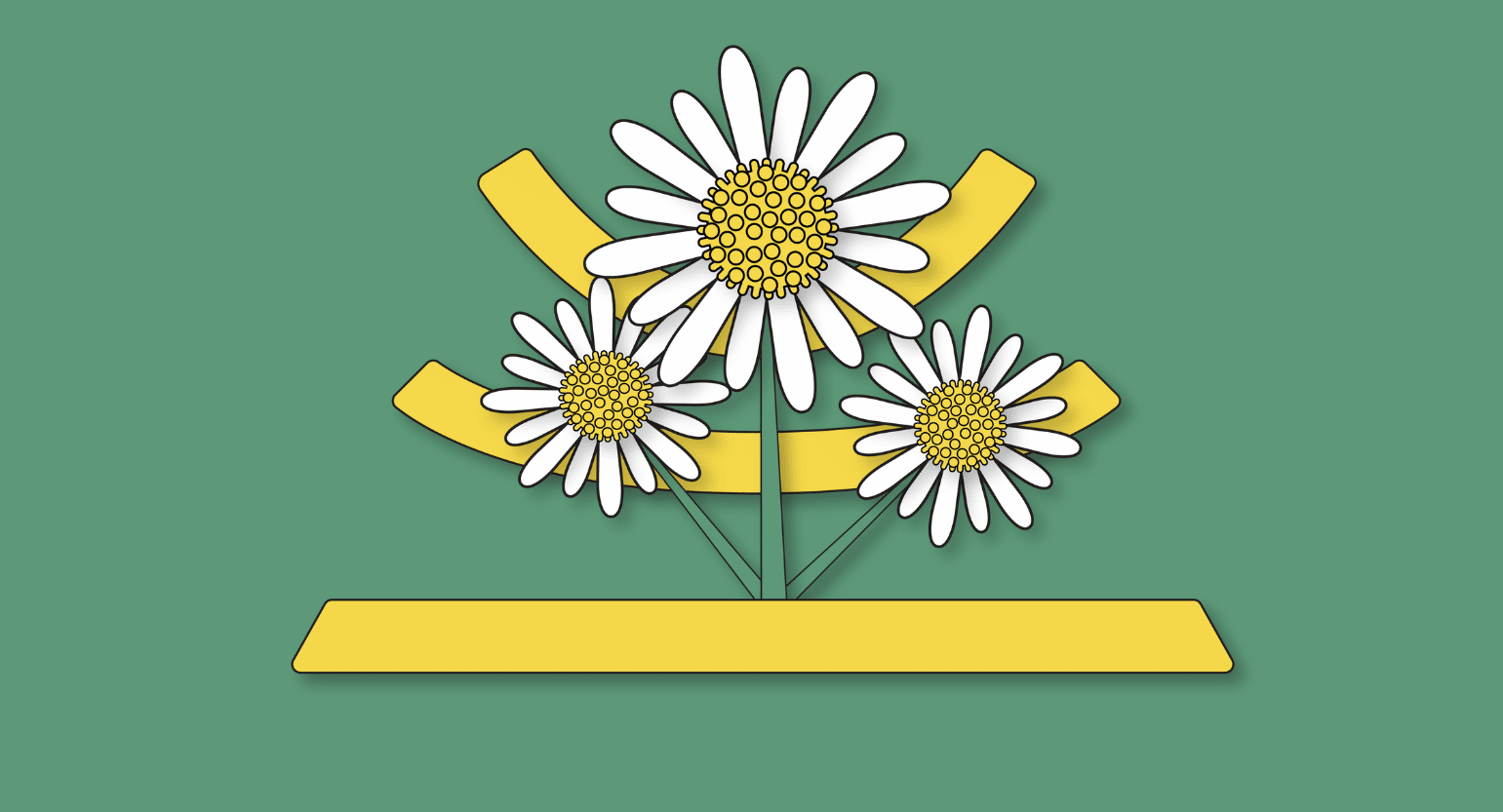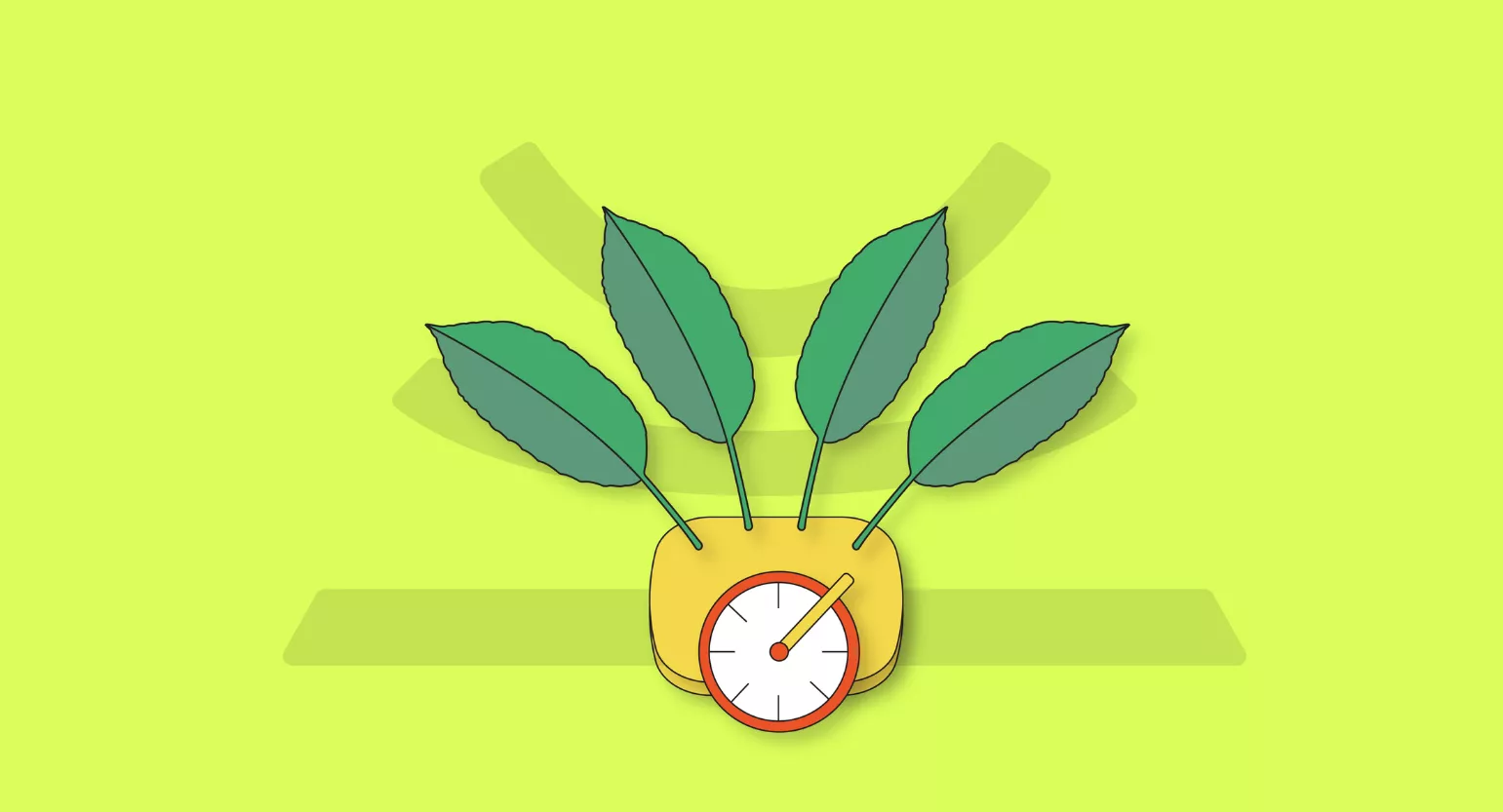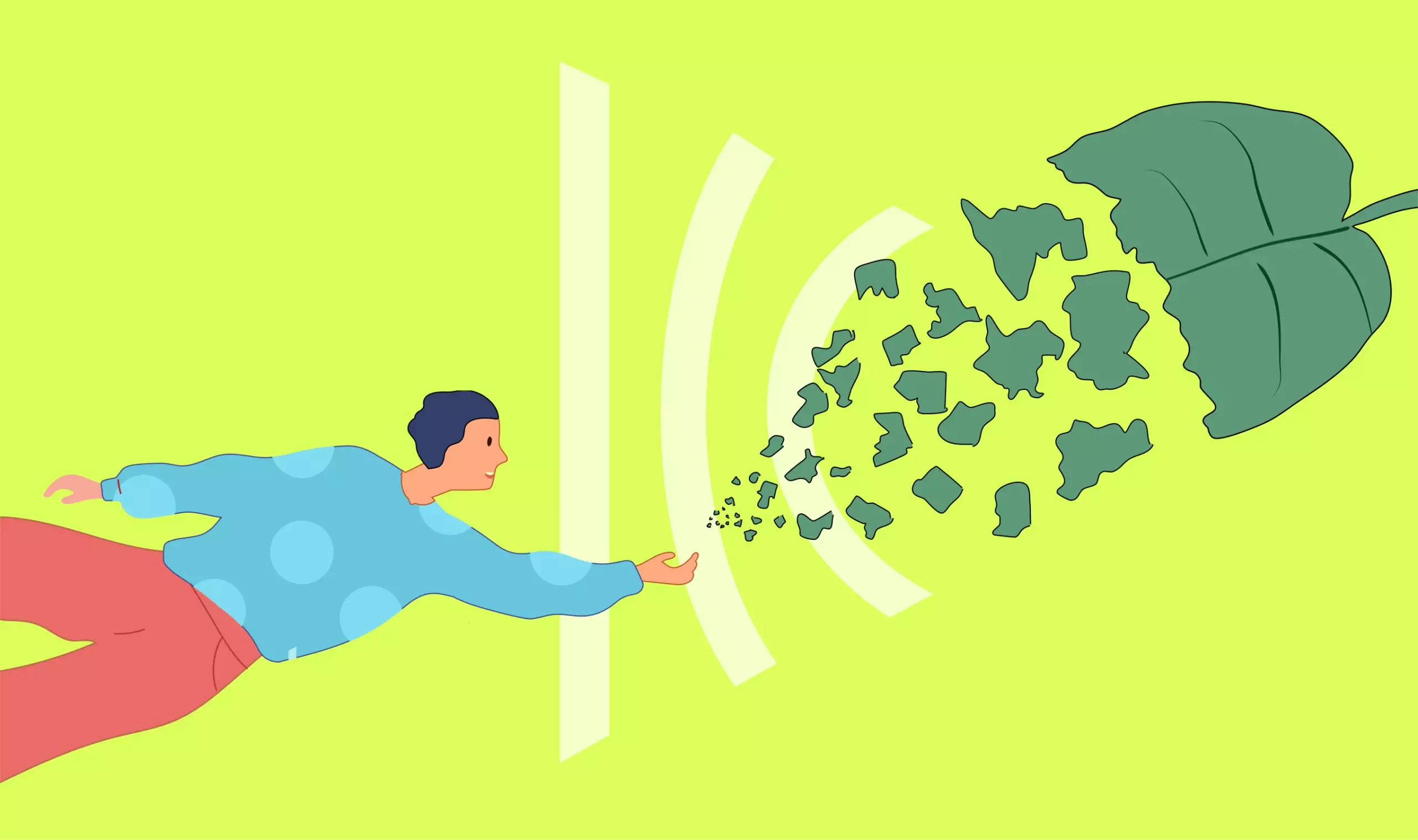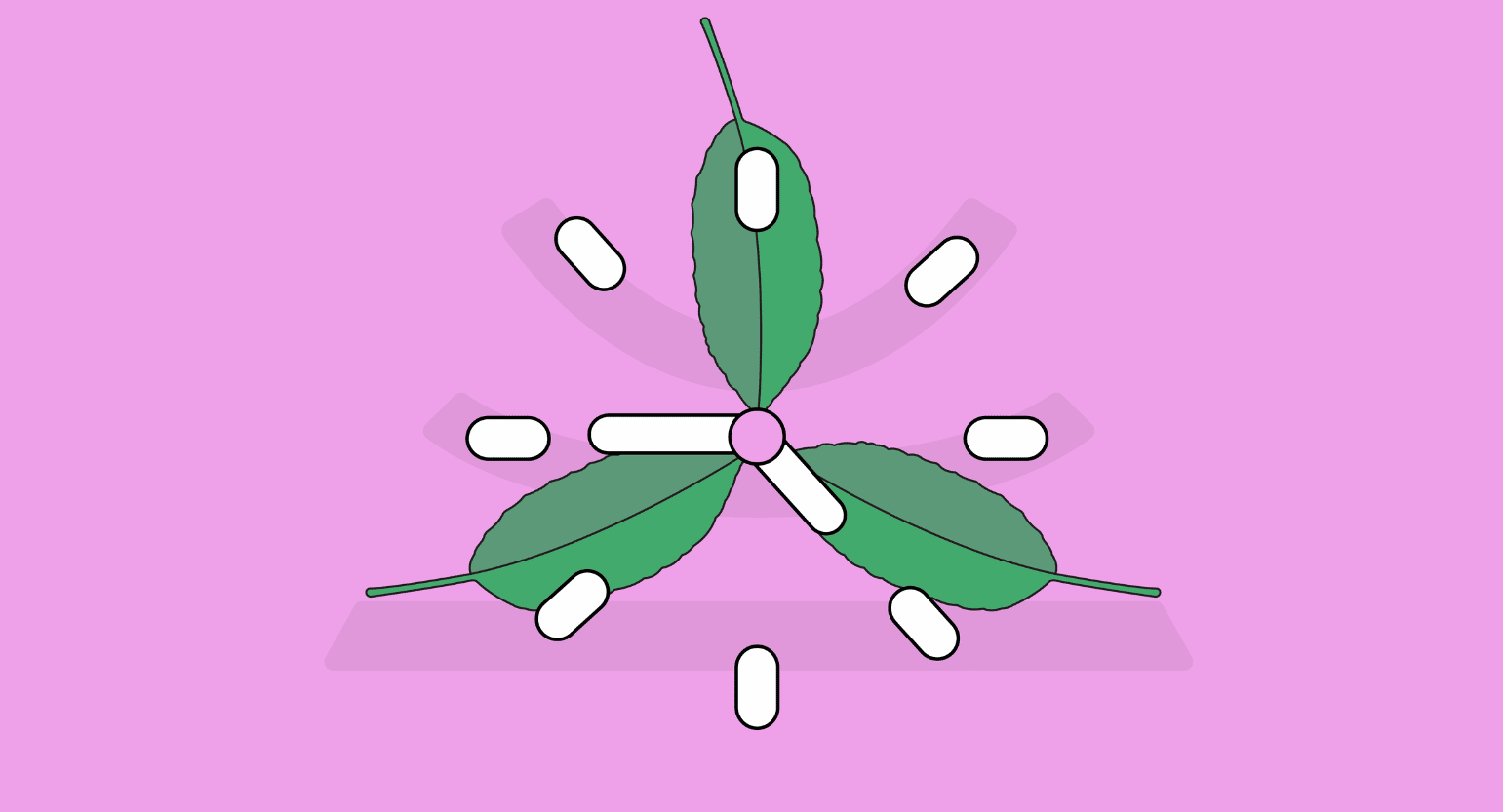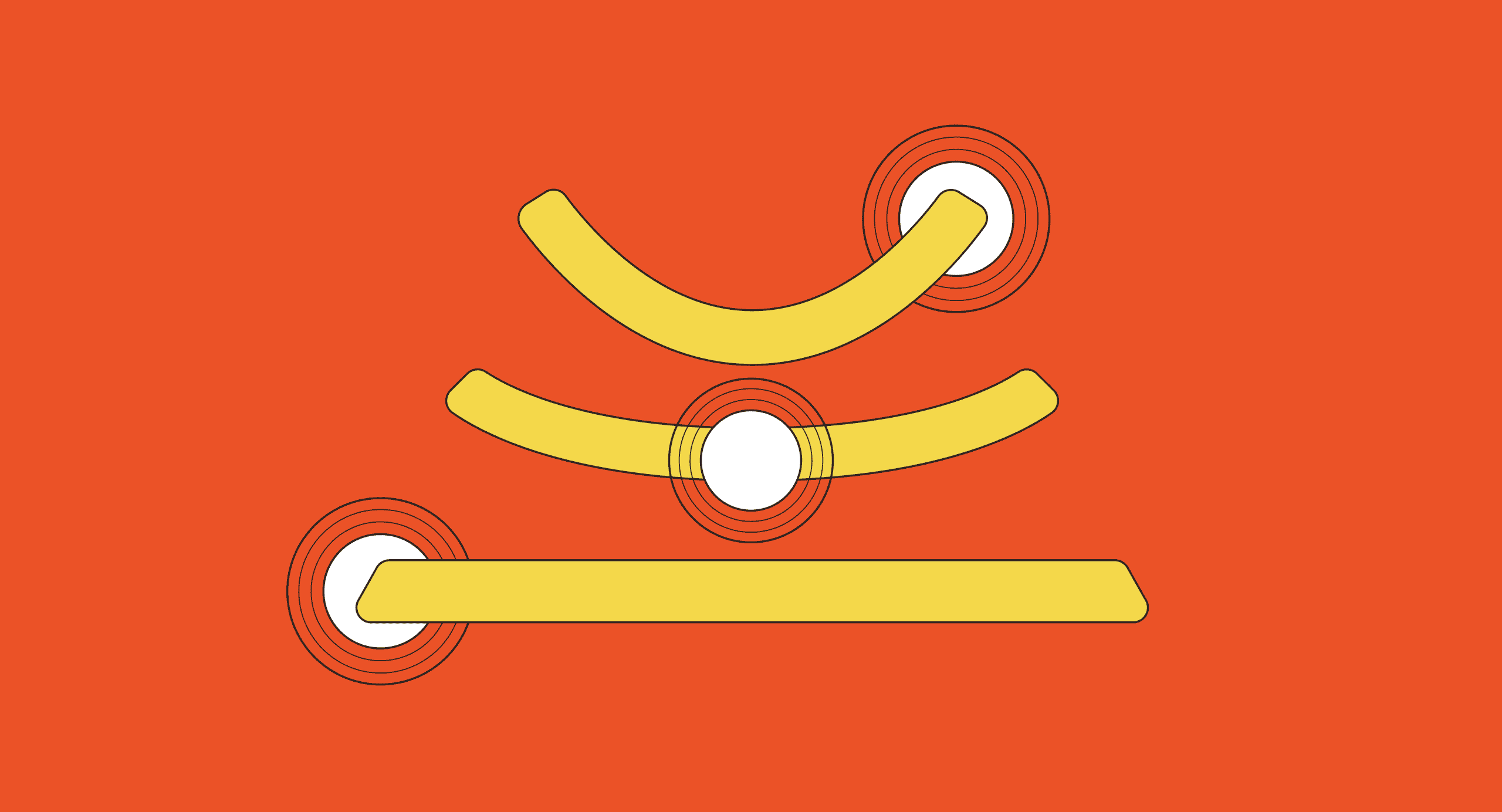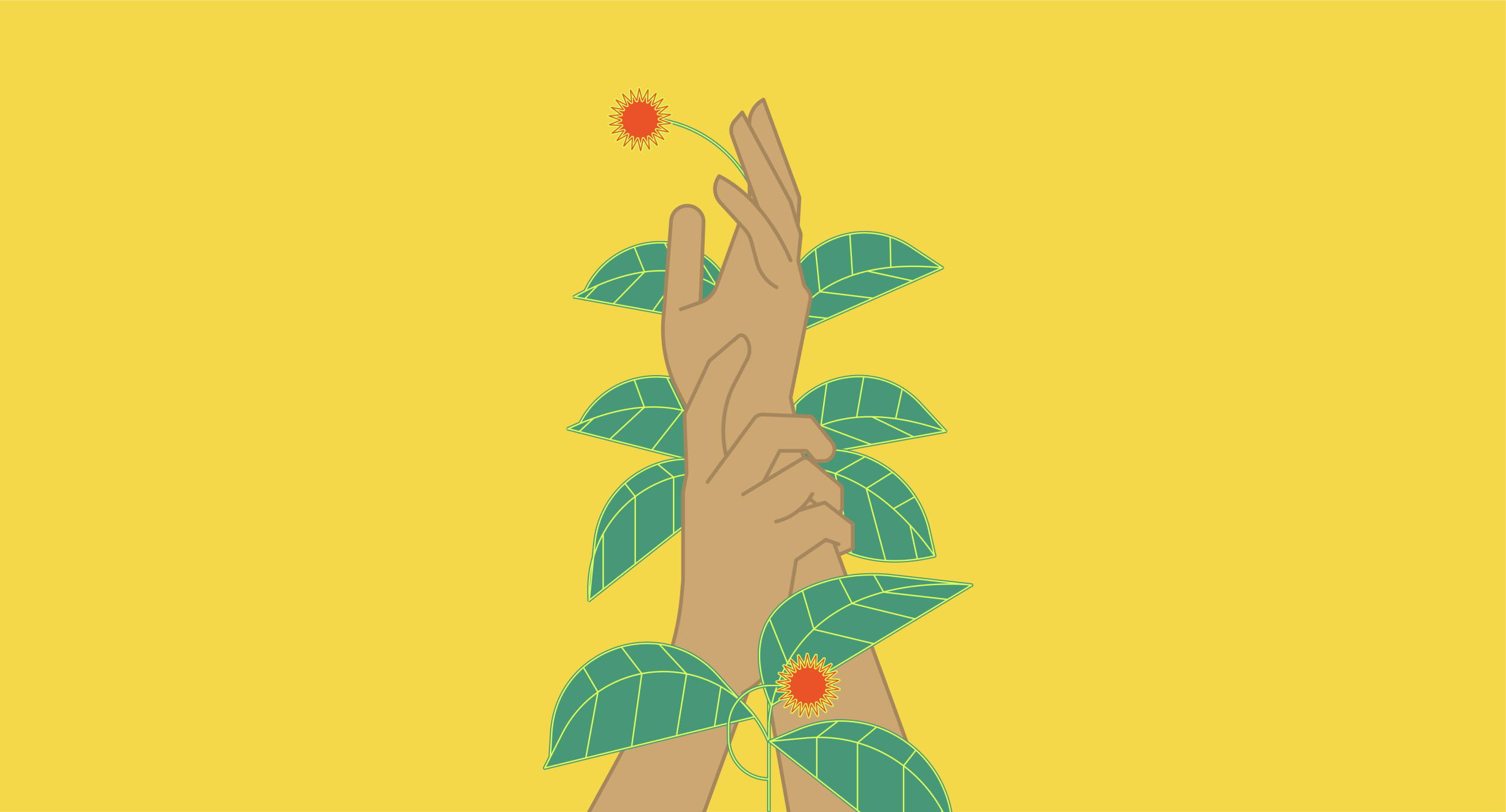Description of Feverfew
Tanacetum parthenium, commonly known as feverfew, is a small flowering plant reminiscent of chamomile. Both plants are in the Asteraceae family, home to daisies and sunflowers.
Feverfew is a tolerant herb that grows well in many different conditions; as such, it is cultivated throughout numerous countries across the planet. It is now widely recognized as a potent medicinal herb. As more studies confirm the centuries-old herbal applications of the plant, more and more people are eager to grow it themselves.
Fortunately, feverfew is simple to grow in your garden. Its medicinal benefits can be enjoyed as a preventative once you’ve got an established plant. Chewing a leaf or two every day will help to stimulate your digestion and circulatory system. Over time, this will tone these parts and improve your overall health.
Taxonomy
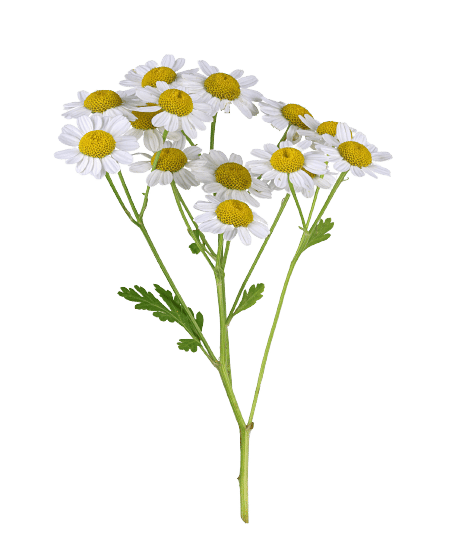
| Kingdom | Planta |
| Subkingdom | Trachiobionta |
| Division | Spermatophyta (plants that seed) |
| Class | Magnoliophyta |
| Subclass | Magnoliophyta |
| Family | Asterales |
| Genus | Tanacetum |
Latin names: Tanacetum parthenium, Chrysanthemum parthenium, Matricaria parthenium, Matricaria capensis, Matricaria eximia, Parthenium hysterophorus, Pyrenthum parthenium
Common names: Feverfew, bachelor’s buttons, feather few, European feverfew, feather-fully, feddygen, flirtroot, grande chamomile, mutterkraut, vetter-voo, Santa Maria, wild quinine, midsummer daisy, and nosebleed.
Botanical & Geographical Information
The feverfew plant originally hails from the Balkan Peninsula but has since taken root all over the globe. Some of the most prominent countries currently cultivating the herb include Australia, Europe, China, Japan, the United States, and North Africa.
Once the herb has established itself in a region, it needs little attention to thrive. It’s a hardy herb that can grow abundantly next to roads, in refuse and garbage dumps, in fields, or at the edges of forests.
The flowers sprout from June to September and look like daisies, with yellow centers and white, fragrant petals. The plant grows to a maximum of two feet tall and is generally no wider than a foot and a half.
The fern-like foliage emits a strong citrus scent, especially when the feathery leaves are crushed or squeezed. The leaves themselves are yellowish-green and alternate up the stem. They are downy and have such short hairs as to feel nearly smooth.
The flowers, composite, emerge in dense corymbs and maintain their fortitude throughout the summer. The central florets sit on an almost completely flat receptacle and are situated upon a furrowed and erect stem.
The taste is notoriously bitter. The odor of the plant is bitter, as well, when it’s not bruised.
History & Folklore
Feverfew originated in the Balkans and Greece and is a plant with a great deal of culture and folklore surrounding it. It is one of the most commonly-prescribed folk medicines throughout the United Kingdom.
The plant was known as Pyrethrum parthenium before being designated its current botanical name (T. parthenium). Pyrethrum comes from the Greek word for fire, pur. This alludes to the hot taste of feverfew roots, starkly contrasting the potent bitterness of the rest of the plant.
Parthenium is another word derived from Greek. The word parthenos means virgin and may have been chosen due to the plant’s gynecological effects. Most likely, though, it was chosen (as there are numerous parthenium plants) due to the flat disk-like flowers that are infertile.
Further historical evidence suggests that the Greeks named it thus after it helped to save somebody from death after falling from the great Parthenon before it was entirely constructed.
To further reflect the virgin-like purity of the plant, people would sow the plant around their homes to help purify the atmosphere and ward off diseases and spirits.
As one might guess from the large number of Latin names ascribed to the plant, there has been some difficulty classifying it, and there remains some controversy as to what genus it belongs to. It has been placed in five different genera over the years.
Writings nearly a thousand years old have clearly stated the benefit of feverfew, such as Hildegard von Bingen’s quote from the 11th century: “It is good for a healthy person… it diminishes putrid matter…. Augments his good blood and creates clear understanding.”
Its most popular use throughout history was as a febrifuge. In fact, the word feverfew results from a mispronunciation of febrifuge. Doctors also used it as a general digestive stimulant to cleanse the kidneys.
It has also been used to induce abortions as birth control.
Non-medicinal uses for the plant include helping to fight pests. The pyrethrin in the leaves is effective as both a herbicide and insecticide.
The plant’s popularity skyrocketed globally during the 1980s when its efficacy as a migraine remedy became well-known. The first study in this regard was published in the British Health Magazine [1].
The study followed a 68-year-old patient who had struggled with serious migraines since she was 16. Once she began to take feverfew (by chewing three fresh leaves a day), her headaches decreased consistently until, after ten months, they stopped entirely.

Cultivation
Feverfew is a herbaceous perennial that grows best in zones 5 to 9 with full sun and minimal rain.
Feverfew can be propagated in one of three ways. The seeds, roots, and cuttings must each be treated differently to allow the plant to grow successfully.
When planting feverfew from seed, you should sow the plant in February or March, leaving about 2-3 inches between plants. They should be moved into the garden for permanent residence in early June, placing them at least a foot apart. Planting them during a light rain will ensure quick rooting.
If propagating from the roots, lift the plants up during March and divide the roots with a sharp spade into 3-5 pieces.
Prepare cuttings from the young shoots at the base of the plant. Leave the heel of the plant used to make the cuttings attached. Insert between October and May. Shorten the foliage to about 3 inches before planting; ensure they have optimal shade while rooting.
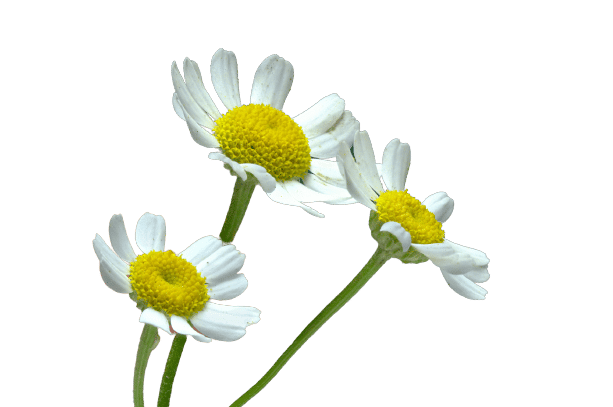
Herbal & Pharmaceutical Actions
Though feverfew is most often prescribed for managing headaches (and, as the name suggests, for placating a fever), it boasts several other potent actions:
- Anti-fever
- Anti-inflammatory
- Anti-migraine
- Anti-rheumatic
- Anti-spasmodic
- Anti-thrombotic
- Antihistamine
- Bitter
- Carminative
- Diuretic
- Emmenagogue (stimulating, only in high doses)
- Febrifuge
- Laxative
- Relaxant
- Tonic
- Vasodilator
- Vermifuge
These actions synergize to produce a unique, healing, analgesic effect. This led to feverfew being used as a folk treatment for issues like menstrual irregularity, arthritis, asthma, allergies, dyspepsia, and parasites.
It’s also used as a digestive tonic and an agent for reducing the discomfort of skin conditions like psoriasis.

How Is Feverfew Used?
There are many different ways to take feverfew.
As a prophylactic and preventative, one simply has to chew a leaf or two daily. This is easy to do if you’re growing feverfew on your property.
Liquid alcohol extracts, called tinctures, are another popular way to use feverfew.
The dried leaf can also be chewed. Due to its bitter taste, it should be mixed with other herbs if preparing a decoction (tea) unless one can handle the bitterness.
The dose varies depending on the plant’s preparation [2]. The goal is to consume between 250-600 mg of parthenolide 1 – to 3 times daily.
- Raw leaves: No more than 2-3 (0.25-0.5 teaspoons) should be chewed daily
- Freeze-dried leaf: 50 mg should be taken daily, with or without food
- Dried leaf: 0.2-0.4 g
- Dried shoots: 50-200 mg can be taken daily
- Liquid extract: 4-8 ml daily
Active Constituents & Alkaloids in Feverfew
Feverfew contains a fairly large number of different constituents. This has led to some disagreement and confusion among researchers attempting to identify which components produce certain medicinal effects.
Of the 39 identified compounds, the sesquiterpene lactone called parthenolide is generally the most potent active ingredient. A total concentration of at least 0.2% parthenolide is necessary for feverfew products to produce healing effects.
However, some studies reveal products containing up to 0.35% parthenolide to be ineffective. This suggests that scientists need to recognize the inherent value of synergy between the various phytochemicals found in medicinal herbs. They are greater than the sum of their parts.
Other compounds in the plant include essential oils, flavonoids, monoterpenes, and polyacetylene compounds, as well as melatonin, a metabolite of serotonin that humans produce at night.
The leaves contain the most active constituents. If purchasing a feverfew supplement, check the bottle to ensure that you’re buying a product made exclusively with the leaves. Cheaper products (which may simply not list the parts used) often include the stems and flowers.
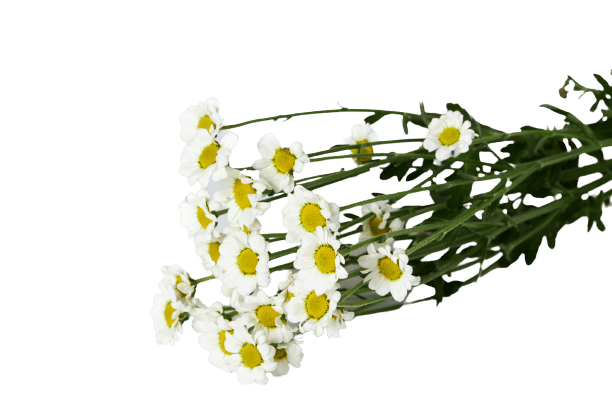
Sesquiterpene Lactones
There are numerous sesquiterpene lactones in feverfew. While parthenolide is almost certainly the most potent, they all work together to produce the effect of the raw leaf.
There are five different kinds of sesquiterpene lactones. These can be identified and classified by the structure of their chemical rings.
Of these, three are in feverfew:
- Eudesmanolides
- Germacranolides
- Guaianolides
Sesquiterpene lactones identified thus far include [3]:
- Artecanin
- Artemorin
- Balchanin
- Canin
- Costunolide
- 10-epicanin
- Epoxyartemorin
- 1-beta-hydroxyarbusculin
- 3-beta-hydroxycostunolide
- 8-alpha-hydroxyestagiatin
- 8-beta hydroxyreynosinn
- 3-beta-hydroxyparthenolide
- Manolialide
- Reynosin
- Santamarine
- Epoxysantamarine
- Secotanaparthenolide A
- Secotanaparthenolide B
- Tanaparthin-alpha-peroxide
- 3,4-beta-epoxy-8-deoxycumambrin B
Flavonoids
Flavonoids come in six different types, all of which are ketone-containing compounds. These are flavones, flavanones, flavan-3-ols, flavonols, isoflavones, and anthocyanins.
They are all potent antioxidants and thus help improve your body’s ability to ward off illness. Isoflavones are beneficial for balancing hormones; anthocyanins are compounds that produce different colors in plants.
Flavonoids also help to regulate the activity of your cells. In other words, they have the general function of improving communication and function throughout your whole body.
Flavonoids are polyphenolic compounds produced by plants as secondary metabolites, making them a common component of human diets.
Most flavonoids have a chemical structure with a 15-carbon skeleton containing two phenyl rings and a heterocyclic ring. This is commonly abbreviated as C6-C3-C6.
Some of the flavonoids identified in feverfew include [4]:
- Quercetin
- Apigenin
- Luteolin
- Chrysoeriol
- Santin
- Jaceidin
- Centaureidin
- 6-hydroxykaempferol 3,6-dimethyl ether
- 6-hydroxykaempferol 3,6,4′-trimethyl ether (tanetin)
- Quercetagetin 3,6-dimethyl ether

Volatile Oils
Volatile oils are plant compounds that produce the distinct flavor and scent of a plant. Essential oils are believed to possess the true essence of a plant. They are among the most important medicinal constituents found in plants.
In addition to being used for aromatherapy, they can contribute to the antioxidant and antimicrobial effects of a plant. Since they readily evaporate when exposed to air, they must be extracted carefully.
The primary compounds found in the essential oil of feverfew include [5]:
- Camphor (56.9%, camphene (12.7%)
- P-cymene (5.2%)
- Bornyl acetate (4.6%)
Numerous other compounds contribute to the oil in smaller quantities:
- Tricylene
- Α-thujene
- Α-pinene
- Β-pinene
- Α-phellandrene
- Α-terpinene
- Γ-terpinene
- Chrysantheone
- Pinocarvone
- Borneol
- Terpinen-4-ol
- Ρ-cymene-8-ol
- Α-terpineol
- Myrtenal
- Carvacrol
- Eugenol
- Trans-myrtenol acetate
- Isobornyl 2-methyl butanoate
- Caryophyllene oxide
Pharmacology of Feverfew
Although most commonly prescribed for headaches, feverfew can be useful for managing the pain of many different types. Research confirms that feverfew provides relief similarly to over-the-counter painkillers and anti-inflammatory agents.
On top of this, feverfew has many actions that can reduce pain and inflammatory markers.
Most of the following seem to result from its ability to inhibit prostaglandin [13]:
- Inhibit platelet aggregation
- Encourages the body to secrete allergy modulators like histamine and serotonin
- Smooths and tones vascular tissue
- Fights microbes and enhances immunity
Although these effects have been observed, they haven’t been tested in clinical trials to evaluate their efficacy in managing painful conditions. The only studies done on feverfew about treating specific conditions are the ones that confirm its migraine-fighting ability.
Nonetheless, feverfew has a vast number of folk uses.
Other actions attributed to feverfew extracts include [2]:
- Inhibition of leukotriene and thromboxane production
- Inhibition of phospholipase A2, thus enabling the release of arachidonic acid from phospholipid cellular membranes
- Inhibition of the interaction between platelets and collagen substrates
- Inhibiting granule secretion in platelets and neutrophils, which are related to migraine frequency and rheumatism discomfort, respectively
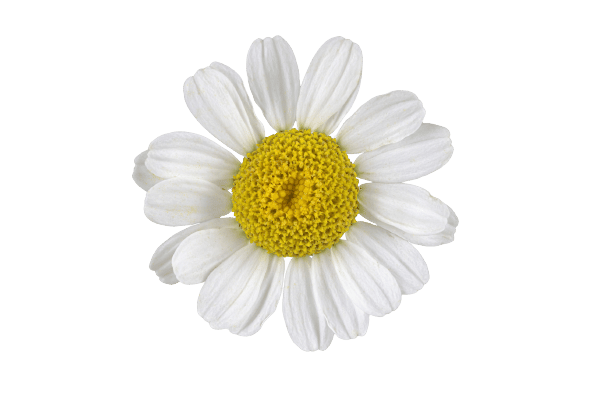
Scientific Evidence for Benefits of Feverfew
Here’s a collection of some of the most prominent scientific evidence supporting the medicinal use of feverfew.
Anti-inflammatory Effects
Feverfew works as an anti-inflammatory agent in several ways.
One of the suggested mechanisms involves the binding of parthenolide to the IKKb kinase complex [6]. By binding to and inhibiting this complex, parthenolide helps to reduce pro-inflammatory cytokine signaling.
Feverfew is also a potent inhibitor of prostaglandin; leaf extract is somewhat less powerful.
Other ones responsible for anti-inflammatory effects include tanetin. This fat-soluble flavonoid is found in the plants’ leaves, flowers, and seeds and helps prevent prostaglandin production [7].

Effect on Smooth Muscle Tissue
Feverfew affects the contraction and relaxation of smooth muscle tissue, especially in animal studies.
One such study revealed a dose and time-dependent inhibition of aorta in rabbits [8]. Extracts of leaf were less effective at reducing smooth muscle contractions caused by potassium depolarization. Fresh leave extracts were the most potent smooth muscle contraction inhibitors due to the higher amount of parthenolide.
Effect on Platelets
Feverfew extract can inhibit the secretion of serotonin from platelets [9]. This inhibition results from the plant neutralizing sulfhydryl groups, inside or outside the cell.
Some of the sesquiterpene compounds in the plant contain a substance that reacts heavily with sulfhydryl groups. Feverfew also inhibits the production of polymorphonuclear leukocyte granules. This likely assists in the plant’s ability to prevent migraines.

Effect on Histamine & Allergies
The body releases histamine during an allergic reaction. Chloroform-based feverfew extracts reduce histamine release in animal studies [10].
The effect of feverfew extracts differed from that caused by typical mast cell inhibitors, usually used for histamine release inhibition. The precise operation of feverfew has not been determined yet, but researchers speculate that the mediation of calcium transport in mast cells may be responsible.
Effects on Cancer
Feverfew might help fight cancer and enhance the effects of chemotherapy.
One of its suggested actions is to induce cytotoxicity related to preventing DNA proliferation in cancer cells [11].
Parthenolide can induce apoptosis in cancer cells, thus slowing their spread and proliferation. It has been tested against several cancer cells, such as fibroblasts, carcinoma, simian viral cells, and anti-Epstein-Barr early antigens.
Effects on Migraines & Headaches
The effect of feverfew extracts on migraines and headaches is not linked to a single process. All plants operate through several different mechanisms; feverfew has even more biological pathways and actions than the average plant.
Some of the actions discussed (such as inhibiting prostaglandin, decreasing vascular tissue contractions, and preventing platelets from secreting granules) likely contribute to reducing migraines and headaches.
Feverfew is particularly effective at producing results in placebo-controlled studies. One study saw a threefold increase in headaches among patients who switched to taking a placebo during a study evaluating the effects of feverfew [12].
Since patients had all been taking feverfew before the study, this revealed a withdrawal-type effect associated with the sudden cessation of feverfew usage.
Also see: The Difference Between Cluster Headaches and Migraines.

Safety & Precautions
While feverfew shows an extremely low toxicity profile (studies as long as six months report no toxic reactions in participants), touching the herb itself may cause some discomfort. Dermatitis can result from coming into contact with the plant, and, in rare cases, aphthous ulcerations can develop from chewing raw leaves.
These issues are more likely to occur in those allergic or sensitive to plants in the Compositae family, who should avoid feverfew entirely. Other Compositae plants include ragweed, marigolds, and daisies.
Side effects are not common, and none are serious, but some people may notice them during the first week of usage.
These side effects can include:
- Inflammation in the mouth
- Swollen lips
- Loss of taste
- Urinary issues
- Headaches
- Digestive issues
- Hypersensitivity
Chewing the leaves for extended periods can lead to abdominal pain and dyspepsia.
You should avoid taking feverfew alongside other herbs and drugs that inhibit platelet aggregation (ginkgo biloba, garlic).
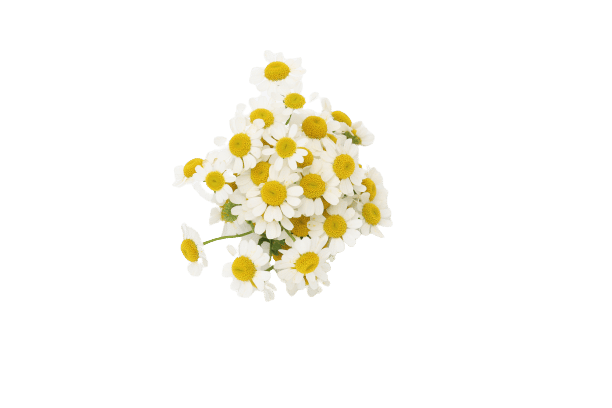
Contraindications
Avoid using feverfew with anticoagulant herbs and drugs such as warfarin.
If you’re already taking over-the-counter NSAIDs or anti-inflammatory agents, they may reduce the efficacy of feverfew due to their effect on prostaglandin.
Feverfew is also contraindicated for pregnant women. It can function as an emmenagogue, thereby increasing the risk of having an abortion, especially shortly after becoming pregnant.
Feverfew should not be taken with calcium channel blockers, ticlopidine, or coumadin.
The plant should not be used by children younger than two years old. Avoid self-medication; only use it with a doctor or trained herbalist’s guidance.
- Editorial. (1985). Feverfew—a new drug or an old wives’ remedy. Lancet, 1, 1084.
- Duke, J. A. (2002). Handbook of medicinal herbs. CRC press.
- Setty, A. R., & Sigal, L. H. (2005, June). Herbal medications commonly used in the practice of rheumatology: mechanisms of action, efficacy, and side effects. In Seminars in arthritis and rheumatism (Vol. 34, No. 6, pp. 773-784). WB Saunders.
- Williams, C. A., Harborne, J. B., & Eagles, J. (1999). Variations in lipophilic and polar flavonoids in the genus Tanacetum. Phytochemistry, 52(7), 1301-1306.
- Akpulat, H. A., Tepe, B., Sokmen, A., Daferera, D., & Polissiou, M. (2005). Composition of the essential oils of Tanacetum argyrophyllum (C. Koch) Tvzel. var. argyrophyllum and Tanacetum parthenium (L.) Schultz Bip. (Asteraceae) from Turkey. Biochemical Systematics and Ecology, 33(5), 511-516.
- Kwok, B. H., Koh, B., Ndubuisi, M. I., Elofsson, M., & Crews, C. M. (2001). The anti-inflammatory natural product parthenolide from the medicinal herb Feverfew directly binds to and inhibits IκB kinase. Chemistry & biology, 8(8), 759-766.
- Loesche, W., Mazurov, A. V., Voyno-Yasenetskaya, T. A., Groenewegen, W. A., Heptinstall, S., & Repin, V. S. (1988). Feverfew–an antithrombotic drug?. Folia Haematologica (Leipzig, Germany: 1928), 115(1-2), 181-184.
- Barsby, R. W. J., Salan, U., Knight, D. W., & Hoult, J. R. S. (1992). Feverfew extracts and parthenolide irreversibly inhibit vascular responses of the rabbit aorta. Journal of pharmacy and pharmacology, 44(9), 737-740.
- Chavez, M. L., & Chavez, P. I. (1999). Feverfew. Hospital Pharmacy, 34(4), 436-461.
- Hayes, N. A., & Foreman, J. C. (1987). The activity of compounds extracted from feverfew on histamine release from rat mast cells. Journal of pharmacy and pharmacology, 39(6), 466-470.
- Zhang, S., Ong, C. N., & Shen, H. M. (2004). Critical roles of intracellular thiols and calcium in parthenolide-induced apoptosis in human colorectal cancer cells. Cancer letters, 208(2), 143-153.
- Johnson, E. S., Kadam, N. P., Hylands, D. M., & Hylands, P. J. (1985). Efficacy of feverfew as prophylactic treatment of migraine. Br Med J (Clin Res Ed), 291(6495), 569-573.
- Pareek, A., Suthar, M., Rathore, G. S., & Bansal, V. (2011). Feverfew (Tanacetum parthenium L.): A systematic review. Pharmacognosy reviews, 5(9), 103.

